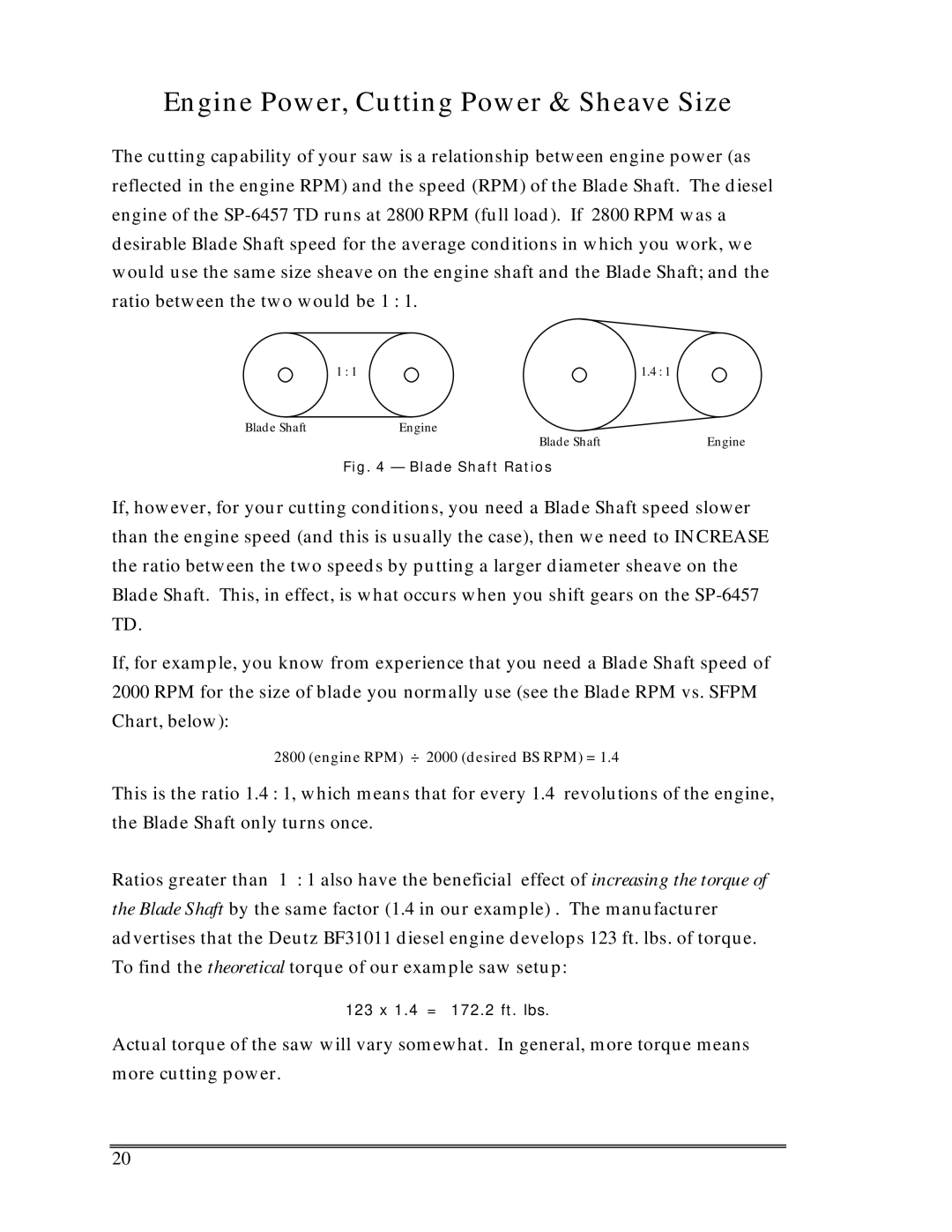
Engine Power, Cutting Power & Sheave Size
The cutting capability of your saw is a relationship between engine power (as reflected in the engine RPM) and the speed (RPM) of the Blade Shaft. The diesel engine of the
1 : 1 |
| 1.4 : 1 |
Blade Shaft | Engine |
|
| Blade Shaft | Engine |
Fig. 4 — Blade Shaft Ratios
If, however, for your cutting conditions, you need a Blade Shaft speed slower than the engine speed (and this is usually the case), then we need to INCREASE the ratio between the two speeds by putting a larger diameter sheave on the Blade Shaft. This, in effect, is what occurs when you shift gears on the
If, for example, you know from experience that you need a Blade Shaft speed of 2000 RPM for the size of blade you normally use (see the Blade RPM vs. SFPM Chart, below):
2800 (engine RPM) ÷ 2000 (desired BS RPM) = 1.4
This is the ratio 1.4 : 1, which means that for every 1.4 revolutions of the engine, the Blade Shaft only turns once.
Ratios greater than 1 : 1 also have the beneficial effect of increasing the torque of the Blade Shaft by the same factor (1.4 in our example) . The manufacturer advertises that the Deutz BF31011 diesel engine develops 123 ft. lbs. of torque. To find the theoretical torque of our example saw setup:
123 x 1.4 = 172.2 ft. lbs.
Actual torque of the saw will vary somewhat. In general, more torque means more cutting power.
20
